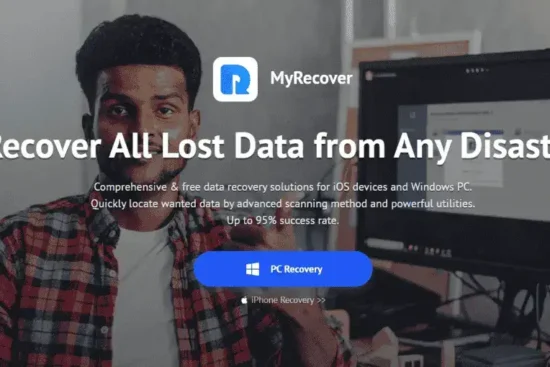
Data has become an essential asset for organizations of all sizes and industries. It is used to gain insights into business operations, understand customer behavior, and make data-driven decisions. To manage and analyze data, organizations traditionally relied on data warehouses. However, the rise of big data has led some to question whether data warehouses are still relevant. In this blog, we’ll explore whether, big data replace data warehouse or not.
What is a Data Warehouse?
A data warehouse is a large, centralized repository of data that is used for reporting and analysis. It is designed to handle structured data from multiple sources, such as customer transactions and inventory data. Data warehouses typically use a relational database model and are optimized for query performance.

Data warehouses are designed to support decision-making by providing a single source of truth for data analysis. They can help organizations answer questions such as “How many units of a product did we sell last month?” or “What is the revenue generated by our top 10 customers?”
In addition to handling structured data, data warehouses can also be designed to handle semi-structured and unstructured data, such as text documents and social media feeds. This is achieved through the use of advanced data modeling techniques, such as star schema and snowflake schema, which allow for the integration of disparate data sources into a cohesive and understandable format.
Data warehouses also typically undergo a process of data transformation and cleansing to ensure the data is accurate, consistent, and up-to-date. This process involves removing duplicates, correcting errors, and standardizing data formats to ensure that data is consistently structured across all sources.
One key advantage of data warehouses is that they provide a single source of truth for an organization’s data. This means that all departments and stakeholders can access the same data, ensuring consistency and accuracy in reporting and analysis. This can help to improve decision-making and provide insights into an organization’s operations that might not be visible from individual data sources.
Data warehouses can also be used to support advanced analytics techniques, such as data mining and predictive modeling, which can help to identify patterns and trends in data that might not be immediately apparent from raw data sources. This can help organizations to identify new business opportunities, optimize operations, and improve overall performance.
Overall, data warehouses play a critical role in modern data management, providing a centralized repository for structured, semi-structured, and unstructured data that can be used for reporting, analysis, and advanced analytics. They help organizations to improve decision-making, gain new insights, and stay competitive in an increasingly data-driven business environment.
What is Big Data?
Big data refers to the massive amount of structured and unstructured data that is generated every day. This data can come from a variety of sources, such as social media, IoT devices, and customer transactions. Big data is characterized by its volume, velocity, and variety.
Big data requires new technologies and techniques to store, process, and analyze it. These technologies include Hadoop, Spark, and NoSQL databases.
In addition to Hadoop, Spark, and NoSQL databases, there are a variety of other technologies that are used to manage and analyze big data. One key challenge in working with big data is its sheer size – traditional data processing techniques may not be able to handle the volume of data generated by modern systems.
To address this challenge, technologies like distributed file systems and parallel processing frameworks have been developed to enable the processing of large datasets across multiple machines. These technologies allow for data to be partitioned and distributed across multiple nodes, allowing for faster processing and analysis.
Another key technology in big data is machine learning, which is used to identify patterns and insights in large datasets. Machine learning algorithms can be used to perform tasks such as classification, regression, and clustering, enabling organizations to gain new insights and identify opportunities for optimization and improvement.
As big data continues to grow in volume and complexity, new technologies and techniques are constantly being developed to help organizations manage and analyze it. One trend that is emerging is the use of cloud computing and managed services, which allow organizations to store and process large datasets without the need for expensive infrastructure and specialized expertise.
Overall, big data presents both challenges and opportunities for organizations, requiring new technologies and approaches to manage and analyze the massive amounts of data being generated every day. With the right tools and expertise, however, organizations can gain new insights and improve their operations in ways that were previously impossible.
Will Big Data Replace Data Warehouses?
The short answer is no, big data will not replace data warehouses. While big data provides new opportunities for organizations to gain insights from data, data warehouses remain relevant for several reasons.
First, data warehouses are optimized for structured data. Big data technologies are designed to handle unstructured data, such as text and images. While unstructured data can provide valuable insights, structured data is still essential for many types of analysis.
Second, data warehouses provide a single source of truth for data analysis. This ensures that everyone in the organization is working with the same data and reduces the risk of errors and inconsistencies.
Third, data warehouses provide a familiar interface for business users to access and analyze data. Business intelligence tools are designed to work with data warehouses, making it easy for users to generate reports and visualizations.
Finally, data warehouses are still essential for regulatory compliance. Many industries are subject to regulations that require organizations to maintain accurate records of their data. Data warehouses provide a centralized repository that can be audited and validated for compliance.
While it’s unlikely that big data will completely replace data warehouses, there are some who believe that the role of data warehouses will evolve as organizations adopt new technologies and approaches to managing and analyzing data.
One trend that is emerging is the use of cloud-based data platforms that combine the strengths of both big data and data warehouses. These platforms provide a scalable, cost-effective way to store and process large volumes of data, while also providing the structured data management capabilities of traditional data warehouses.
Another trend is the use of data lakes, which are large repositories of raw, unstructured data. Data lakes provide a way to store and manage large volumes of data without the need for structured data management processes. Instead, data is stored in its raw form and processed as needed for analysis.
While data lakes have some advantages over traditional data warehouses, they also present some challenges. Because data is stored in its raw form, it can be difficult to ensure data quality and consistency. Data lakes also require specialized expertise to manage and maintain.
Overall, it’s unlikely that big data will completely replace data warehouses. Rather, we can expect to see new technologies and approaches that combine the strengths of both big data and data warehouses, providing organizations with a more flexible and scalable way to manage and analyze their data.
Conclusion
While big data provides new opportunities for organizations to gain insights from data, data warehouses remain relevant for structured data analysis. Data warehouses provide a single source of truth, a familiar interface for business users, and are still essential for regulatory compliance. Rather than replacing data warehouses, big data technologies can be used in conjunction with data warehouses to gain new insights from both structured and unstructured data.




Leave a Reply
You must be logged in to post a comment.